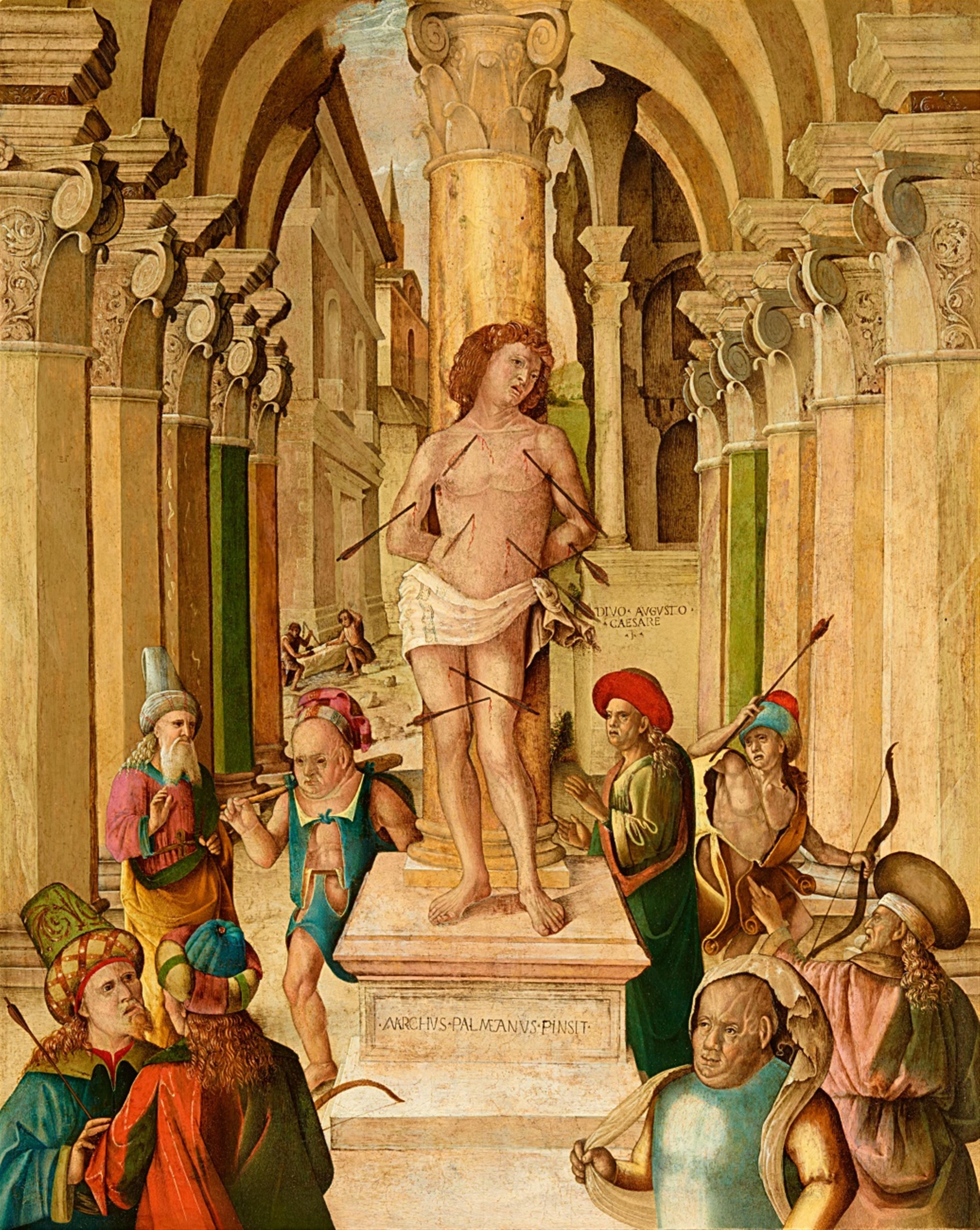Marco Palmezzano
Saint Sebastian
Tempera on panel. 85 x 71cm.
Signed lower centre: MARCHUS PALMEZANUS PINSIT.
This scene of the saint's martyrdom is shown taking place in an open peristyle with a narrow view onto a city in the background. The inspiration for this unusual architectural construction can be found in the works of Piero della Francesca, for example in his “Flagellation” or in the “Pala Monte-feltro”, both of which were located in Urbino at the time the present work was painted.
Palmezzano painted several versions of this motif. The saint's anatomy and the dramatic expression in this work can best be compared to his panel in the Palazzo Magnani in Bologna. There are also certain parallels to a panel which was housed in the Staatliche Kunsthalle in Karlsruhe until 1969 and later auctioned by Christie's New York (on 28th January 2015).
A further version of this motif was included in the Palmezzano exhibition in Milan in 2005. Whilst one of the catalogue's authors, Stefano Tumedei, tentatively attributed the work to the Master of Sant' Eustachio Figdor, whereas Anna Tambini and Vittorio Sgarbi both already list the piece as stemming from the hand of the young Palmezzano (exhib. cat. Marco Palmezzano, il Rinascimento nelle Romagne, ed. by A. Paulucci, L. Prati & S. Tumidei, Milan 2005, p. 184-185, no. 5). Both the work from the exhibition and the present one display the same pronounced interest in the achievements of Piero della Francesca.
The mathematician Luca Pacioli (circa 1445-1514) must have been aware of the works of Palmezzano, as he counted him, alongside Bellini, Mantegna, Ghirlandaio, Signorello, and Melozzo, as one of the greatest Italian masters of perspective. The mention of Palmezzano in his work “Summa di arithmetica, geometria, proportioni e proportionalitá” in 1494 is clear evidence of the artist's early rise to fame.
Provenance
The Giancarlo Gallini collection (1940 - 2011). - Important Italian collection.

